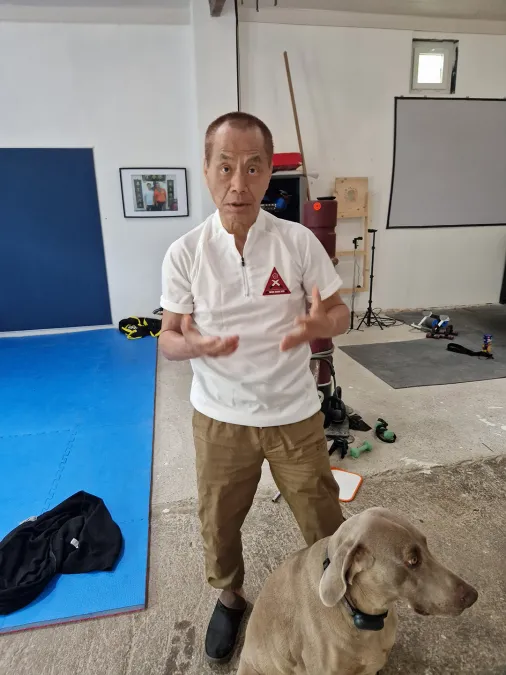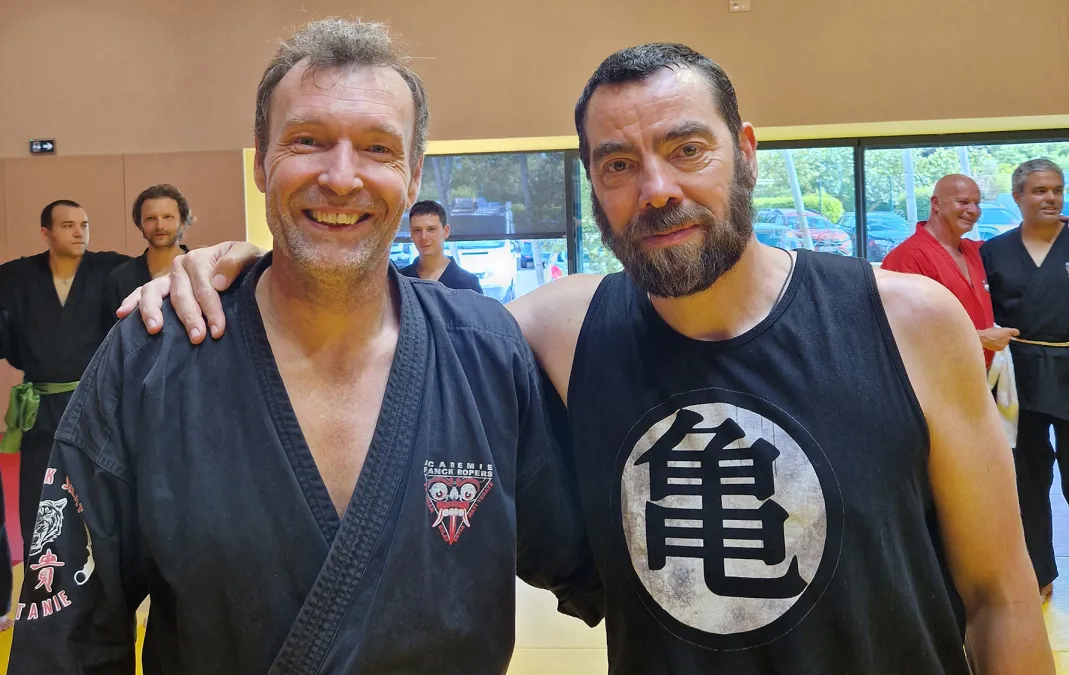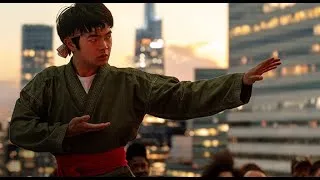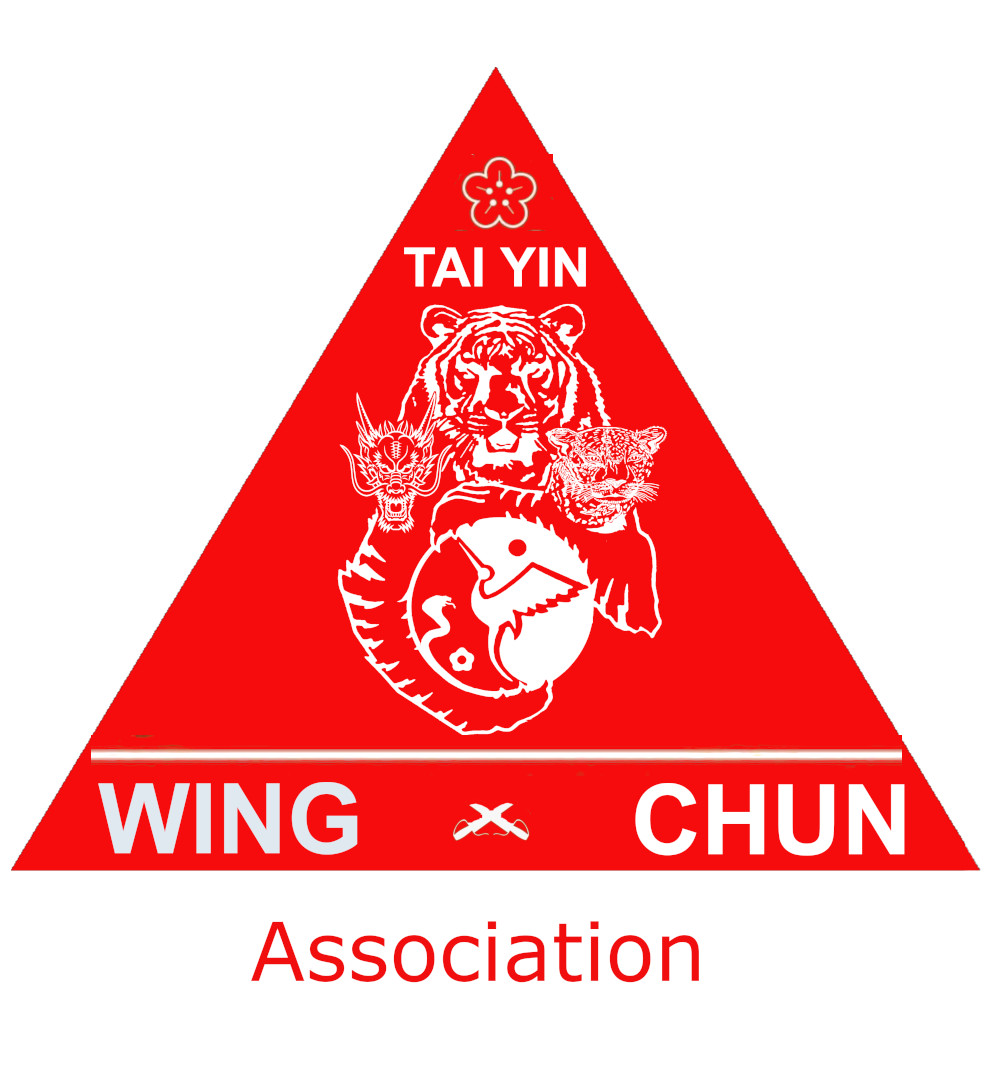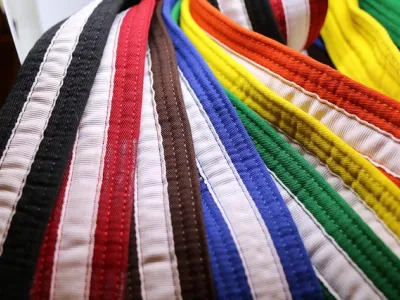
The Mystery of the Karate Belt: Between Japanese Tradition and Chinese Heritage
Introduction
👊 In martial arts, the "karate belt" is much more than just an accessory! It's a symbol of progression, discipline, and history. At Tai Yin Wing Chun, our kung fu school in Montauban and Toulouse, we use a ranking system that reflects both Chinese and Japanese traditions. So, what is the connection between Karate and Kung Fu? Let's dive into this fascinating world!
Did you know that the "karate belt" is a relatively modern concept? Before its introduction, martial artists didn't have a clear visual distinction to indicate their level. This concept changed the face of martial arts, allowing for better organization and a reference point for students and instructors.
But this evolution didn't happen overnight. The first belts were made of simple fabrics, often hand-dyed, and their significance varied depending on the schools and styles. Today, the "karate belt" is a universally recognized symbol in the martial arts world. It represents not only the skills acquired but also the philosophy and values that underpin each discipline.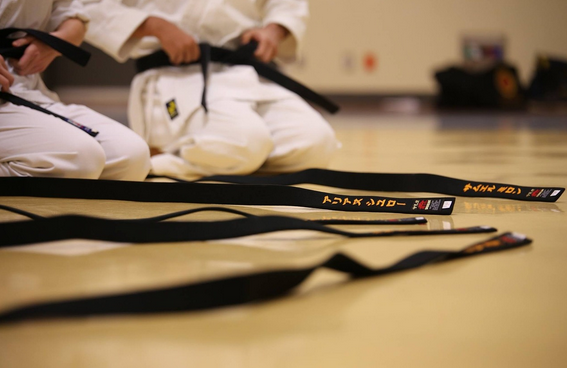
The importance of the belt in martial arts goes beyond mere recognition. It's often seen as a powerful psychological tool that pushes students to aim higher and persevere in their efforts. For example, achieving a black belt is a goal that can motivate a practitioner for years, giving them a sense of purpose and accomplishment.
Moreover, in many schools, the belt awarding ceremony is a very special event. It brings together students, teachers, and sometimes families to celebrate the progress made. These moments strengthen the sense of belonging to a community while honoring the individual efforts of each practitioner.
History and Origin of the Karate Belt
First of all, did you know that Karate has its roots in Chinese Kung Fu? The influence of Shaolin martial arts traveled to Okinawa, where Karate emerged. 🚀
The First Ranks in Asia
In China, martial artists didn't wear belts but used simple outfits. In Japan, Jigoro Kano, founder of Judo, introduced the first "belts" in the 19th century, a tradition that spread to Karate. This is how the famous "karate belt" was born.
- 👶 White belt: beginner
- 🔵 Blue belt: progression
- ⚫ Black belt: mastery
The meaning of the colors has evolved over time. In some styles, like Shotokan or Wado-ryu, each belt represents a combination of technical knowledge and personal maturity. This structure also inspires many students to pursue their goals with perseverance.
Belts are also a way to convey essential values such as respect, humility, and discipline. Each student, by tying their belt, is reminded that they are part of an ancient tradition that continues to thrive worldwide.
Interestingly, in some schools, white belts would gradually become darker as students practiced, due to accumulated sweat and dust. This symbolized their natural progression before the introduction of the colored belts we know today.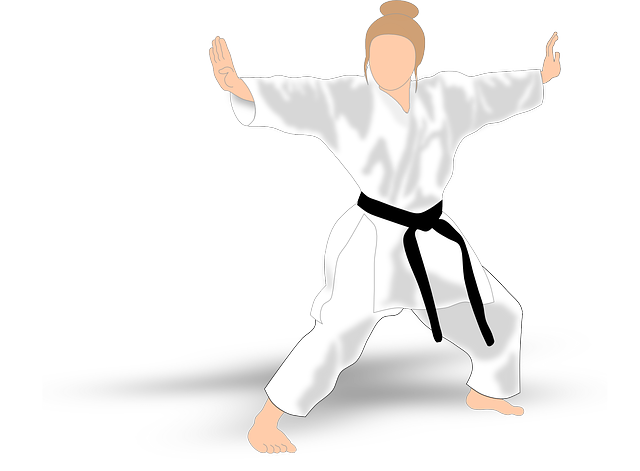
In parallel, some styles have adopted even more detailed ranking systems, with stripes or bands added to the belts to indicate intermediate stages. This allows students to receive more frequent recognition of their progress, which can be particularly motivating for young practitioners.
Kung Fu and Karate: A Rivalry or a Shared Heritage?
While Karate is associated with "belts," Kung Fu, notably at Tai Yin Wing Chun, uses a system based on colored T-shirts to denote student seniority. But why these differences?
Philosophical Differences
Kung Fu focuses more on the balance between body, mind, and internal energies, while Karate emphasizes direct techniques and a methodical structure. However, these two disciplines converge in their quest for personal discipline and continuous improvement. The colored T-shirts in Wing Chun not only mark ranks but also reinforce the student's identity in a lineage that respects the heritage of Foshan. 🌟
For example, in our school, we encourage our students to explore the commonalities between these disciplines. Karate's blocking techniques often find echoes in Wing Chun's circular movements, illustrating the interconnectedness between the two traditions.
By exploring these similarities, students develop a deeper understanding of martial arts in general. They learn that each discipline, while unique, shares fundamental principles that transcend cultural boundaries.
Another notable difference lies in training methods. While Karate often emphasizes katas and repetitive exercises, Kung Fu favors fluid movements inspired by nature, such as those of the crane or tiger styles. These contrasting approaches offer practitioners a rich diversity of experiences.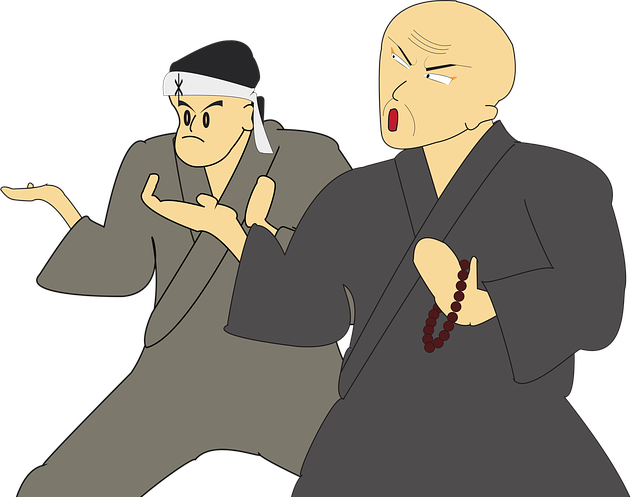
Philosophy Differences
Kung Fu focuses more on the balance between body, mind, and internal energies, while Karate emphasizes direct techniques and a methodical structure. However, both disciplines share a pursuit of personal discipline and continuous improvement. The colorful T-shirts in Wing Chun are not just for marking ranks: they strengthen the student's identity within a lineage that respects the heritage of Foshan. 🌟
For example, in our school, we encourage students to explore the commonalities between these disciplines. Karate's blocking techniques often find echoes in Wing Chun’s circular movements, illustrating the interconnectedness of the two traditions.
By exploring these similarities, students develop a deeper understanding of martial arts in general. They learn that each discipline, while unique, shares fundamental principles that transcend cultural boundaries.
Another notable difference lies in training methods. While Karate often emphasizes katas and repetitive drills, Kung Fu promotes fluid movements inspired by nature, such as those of the crane or tiger styles. These contrasting approaches offer practitioners a rich diversity of experiences.
Local Impact: Montauban and Toulouse as Martial Arts Hubs
🎯 Our school between Montauban and Toulouse attracts many practitioners eager to discover the art of Wing Chun and its connection to Karate. Why choose Tai Yin Wing Chun?
- 🌟 Classes suitable for all levels
- 📜 Certified instructors, heirs to an authentic tradition
- 🌏 A unique vision connecting East and West
Montauban and Toulouse are not just urban centers but cultural crossroads where martial arts thrive. Our students come from diverse backgrounds, creating a dynamic community where traditions and innovations coexist harmoniously.
By participating in local workshops, we have also reinforced our commitment to the community. Each event is an opportunity to share our passion for martial arts while supporting local causes.
For instance, our collaboration with other schools in the region has enabled us to organize friendly tournaments and demonstrations. These initiatives not only strengthen participants' technical skills but also foster cultural exchanges and friendships among practitioners.
Furthermore, these events provide an excellent opportunity to raise awareness about the importance of physical activity and personal discipline. They also help build strong connections between generations, bringing together children, parents, and grandparents around a shared passion.
FAQ: Everything You Need to Know About Belts and Ranks in Karate and Kung Fu
1. Why does Karate use belts?
Belts symbolize progress and mastery of techniques. They also help structure the learning process.
2. Does Kung Fu have belt equivalents?
Yes, at Tai Yin Wing Chun, we use colored T-shirts and Duan for advanced ranks.
3. Can I combine Karate and Kung Fu?
Absolutely! Many of our students practice multiple martial arts to expand their skills. 🎉
4. How long does it take to reach an advanced rank?
In Wing Chun, achieving an advanced rank generally takes between 5 and 8 years, depending on the student's dedication and understanding of concepts.
Each discipline has its own progression pace, but the key is to stay consistent and motivated. Martial arts are not just about techniques but also about personal development.
Conclusion
The journey through the world of "karate belts" and Wing Chun reveals a rich history of connections between Japan and China. 🌏 Come and discover these traditions at Tai Yin Wing Chun, your martial arts school in Montauban and Toulouse. Ready to tie your own belt or wear a Kung Fu T-shirt? Join us today!
📍 Our school's headquarters is located at Zumiao SNo.38 Xibi Lane, Guorui Shengping Litreet, Chancheng District, Foshan City, Guangdong Province, China (next to Shengping Church). It is here that traditions continue to inspire modern generations.
We firmly believe that learning martial arts goes beyond techniques. It is a way of life that teaches resilience, patience, and harmony. Join our community and experience the benefits of this ancient practice for yourself.
Whether you are looking for effective self-defense techniques, a beneficial physical activity, or a new life philosophy, martial arts offer endless possibilities. At Tai Yin Wing Chun, we look forward to guiding you on this journey.

